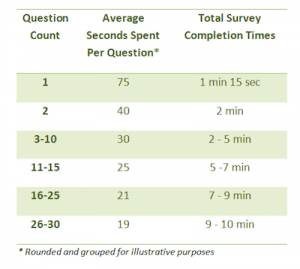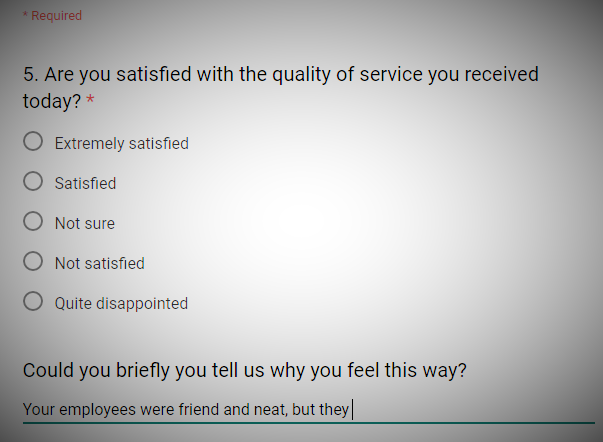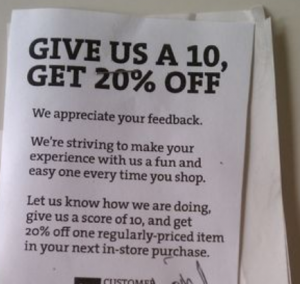
Customer surveys are a great tool to determine how customers feel about a brand & its products or services, but designing a survey which customers would respond to is one thing while designing a survey which would yield actionable insights is another.
When designing surveys it is important that business owners and CX professionals avoid costly mistakes which could render the survey useless and its data unreliable. To create meaningful surveys which customers would respond to, there are important factors which you must consider such as – What you ask, How you ask, When you ask, and How often you ask. In this post, I will share tips on you can implement in creating awesome customer surveys
#1. Define Your Goal
Before you set out surveying customers, you should have a goal you’d like to accomplish. What do you intend to achieve with your survey?
Are you trying to measure customer satisfaction or the customer perception of a new product or service, or trying to determine customer loyalty & advocacy rates?
Depending on your goal, the type of questions, and length of the survey will vary. Once you’ve determined what you would like to learn from the survey the next thing to do is create questions that would lead to the information.
#2. Ask Clear & Specific Questions
Every question you include in your survey should have a purpose & must be relevant to your goal. If a question fails to meet these criteria, then it should be eliminated. For instance, if your goal is the measure how satisfied your customers are with your products or service, then don’t add unnecessary questions such as –
Who is the coolest celebrity you’ve ever met?
How did you hear about us?
Such questions will not help you realize your goal and increase the likelihood of respondents abandoning the survey midway. Stick to questions that give you insights about your goal.
#3. Choose A Delivery Medium
There are different medium available to deliver customer surveys, from face-to-face to telephone & online surveys (Email, Social media etc). Your medium of choice will have an impact on response rate and quality – for instance, some organizations still carry out Telephone surveys, but customers find it intrusive and do not like to be interrupted, they prefer to complete surveys at their own pace.
Among online survey mediums Email is quite popular, but if you fail to adhere to spam laws, a lot of those emails might end up in a spam folder.

Social media platforms like Twitter enable businesses to create polls which customers can respond to in less than a minute, this is in addition to many other online platforms such as SurveyMonkey & Polldaddy that can help you create a customer survey.
Online surveys deliver better results than the telephone surveys as you can reach customers quickly and on their schedule without interrupting them or taking their time. I would recommend a combination of Face-to-face surveys where possible & online surveys for best results.
#4. Keep It Short

The higher the number of questions in your survey, the more likely customers are to abandon it midway. Remember, you’re asking the customers for feedback, don’t make it look like an assignment. I can hardly think of anyone who looks forward to spending 20 minutes of their time filling out surveys. In a study of about 100,000 surveys with 1-30 questions by SurveyMonkey, they discovered that –
“The more questions you ask, the less time your respondents spend, on average, answering each question. When your respondents, in methodological terms, begin “satisficing”—or “speeding” through a survey—the quality and reliability of your data can suffer. On average, we discovered that respondents take just over a minute to answer the first question in a survey (including the time spent reading any survey introductions) and spend about 5 minutes in total, answering a 10 question survey.”
Customer service expert Jeff Toister in his article on Characteristics of a Powerful Customer Survey recommends using these 3 questions whenever possible –
- How would you rate (product, service, experience)?
- Why did you give that rating? (open text response)
- May we follow-up with you if we have additional questions?
#5. Include Open-ended Questions

In addition to multiple choice questions, Likert scales and Yes or No questions, it’s a good idea to include an open-ended question or two towards the end of the survey. The reason for this is that open-ended questions encourage both positive and negative feedback, which would allow the customer express whatever is at the top of mind, which the survey questions might not adequately capture.
A great way to this is to include the open-ended question as a follow up to a prior question. This way you get more insights into why customers give certain answers to the survey question.
#6. Personalize the Survey
When surveying customers online, personalization is a great way to increase their likelihood to participate and fill out the survey. In an email survey, people would normally skim through tons of messages in their inbox to determine what’s important or not, personalization is a great tool for grabbing their attention.
Do you know the customer’s First name or Last name?
Current city? Last purchase?
Such information can be utilized in personalizing your survey, which would make the customer feel known and valued. Include the customer’s name in the email subject to grab their attention. It is also good practice fill out sections of the survey with this data (e.g. customer name) to reduce customer effort & save time.
#7. Send it Quickly
 It is ideal to send your surveys to the customers as soon as possible, customer service expert Shep Hyken recommends getting the survey to customers within 24 hours while their experience with your business is still fresh in their mind.
It is ideal to send your surveys to the customers as soon as possible, customer service expert Shep Hyken recommends getting the survey to customers within 24 hours while their experience with your business is still fresh in their mind.
Depending on your type of business 24 hours might not be ideal, for instance – in an e-commerce business, it’s pointless sending a survey within 24 hours of a customer completing an order, the best time would be within 24 hours after they’ve received their goods. The idea is to get the survey to customers while their last interaction with your business is still recent & fresh.
Bonus: Avoid Survey Begging
 Jeff Toister defines survey begging as – the act of asking a customer to give a positive score on a survey by explaining how it will directly benefit the customer, the employee, or both.
Jeff Toister defines survey begging as – the act of asking a customer to give a positive score on a survey by explaining how it will directly benefit the customer, the employee, or both.
This practice leads to unreliable feedback from your survey as it discourages customers from being objective. As a result, you’d miss out on opportunities to make meaning improvements to your products & services and create a negative impression of your brand in the minds of the discerning customers.
Now you can go ahead & create awesome customer surveys, but don’t forget the next important thing to do after that – review responses & take action!
This article was first published here



